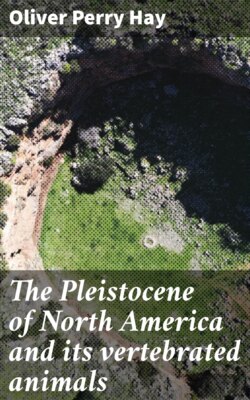Читать книгу The Pleistocene of North America and its vertebrated animals - Oliver Perry Hay - Страница 9
На сайте Литреса книга снята с продажи.
IV. Elevations of the Continent Immediately Preceding or Accompanying the Opening of the Pleistocene.
ОглавлениеTable of Contents
In pursuing the study of the Pleistocene, one soon realizes that this period was one of great geological activity. Ranges of mountains, if not begun anew, were at least raised to greater altitudes. The Cascade Range appears to have begun to rear its head at the beginning of the epoch, or even a little later. Here and there the crust of the earth was ruptured and great sheets of lava were poured out over the land. Ice caps repeatedly accumulated over large areas in North America and Europe, and in their movements southward transported vast amounts of earthy débris and turned the courses of great streams. Apparently at times the rainfall was greatly increased. The rivers, quickened by greater slope and the increased volume of water, cut their channels deeper and in the mountains excavated profound gorges. Through elevation of the land North America was, late in the Pliocene or early in the Pleistocene, put into easy communication with Asia and South America, so that vertebrated animals passed freely to and fro. A part of these activities probably belonged to the latter part of the Pliocene. In the more elevated regions of the eastern United States, through the chemical, rupturing, and transporting properties of water, rocks were dissolved and their disintegrated materials produced what has been designated the Lafayette formation; but it is possible that this belongs to the early Pleistocene.
